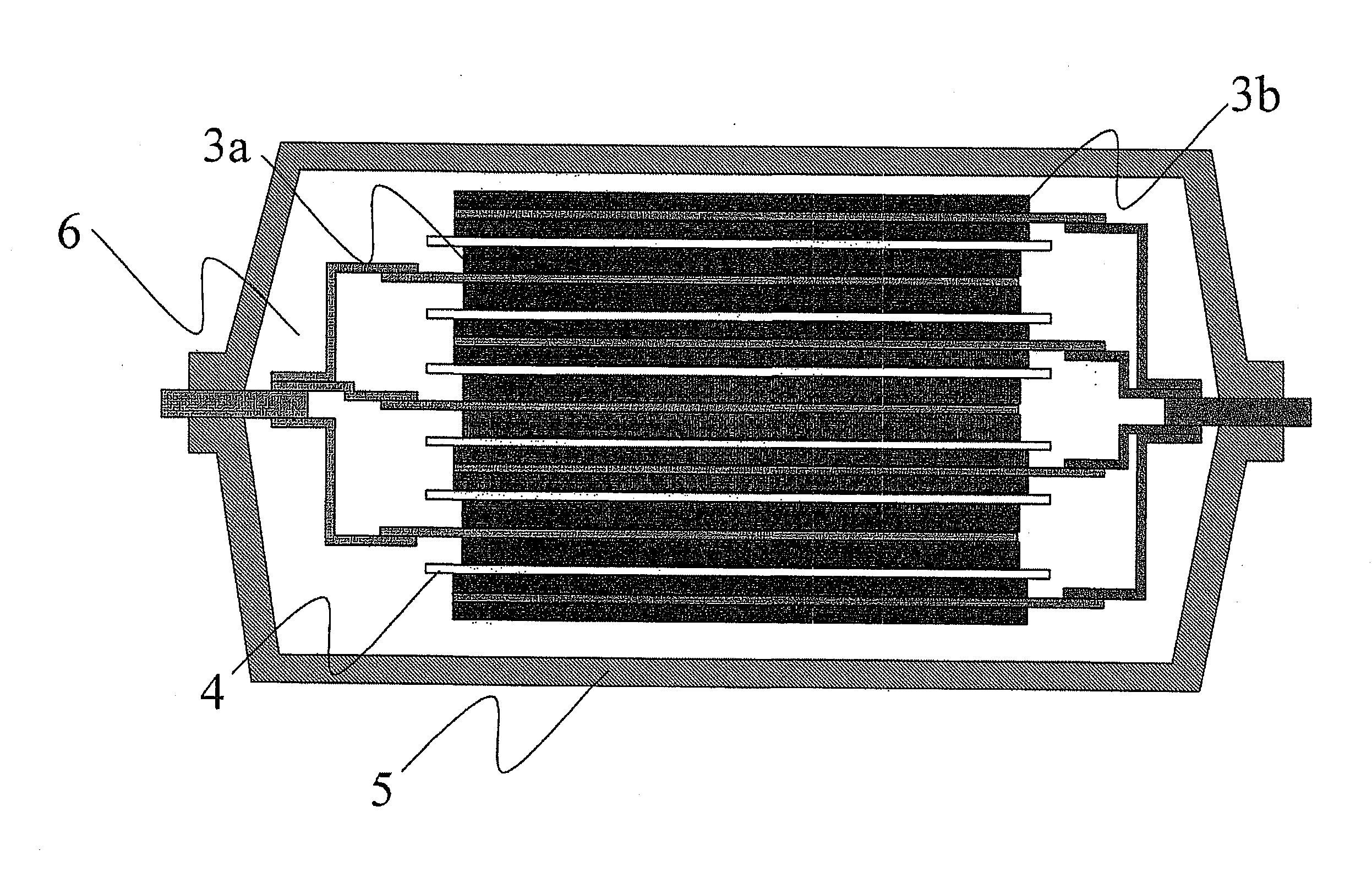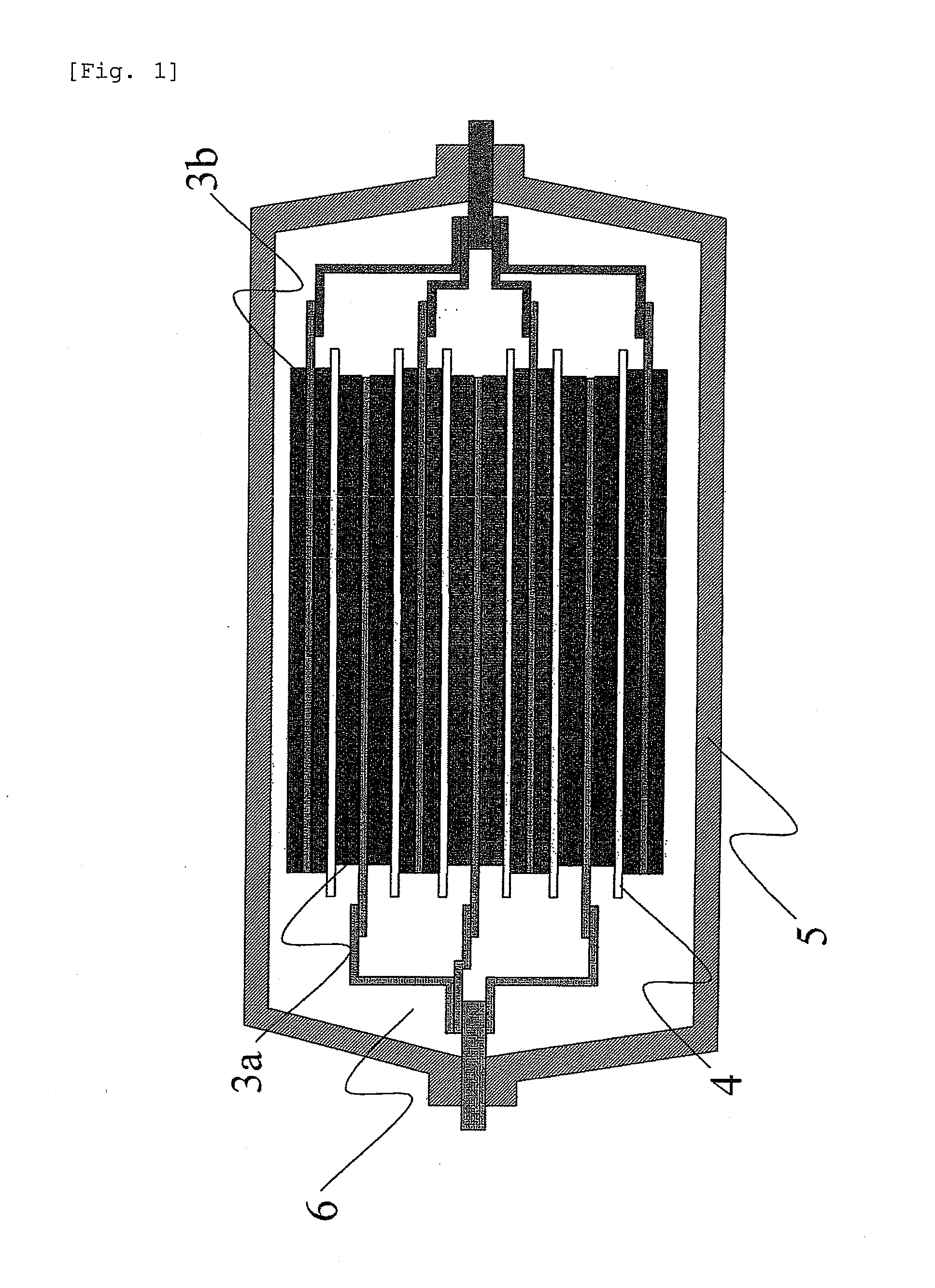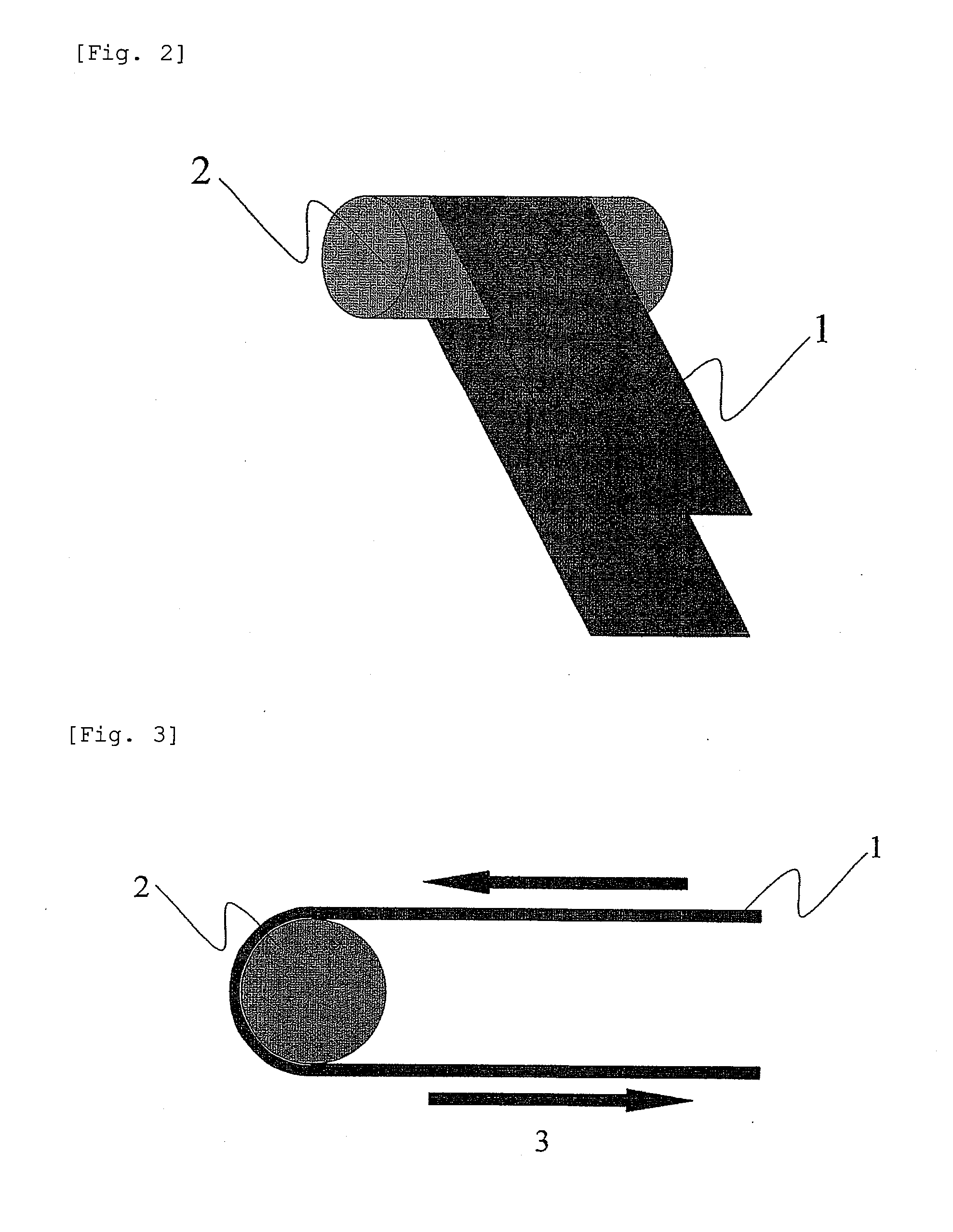Aqueous paste for electrochemical cell, electrode plate for electrochemical cell obtained by applying the aqueous paste, and battery comprising the electrode plate
a technology of electrochemical cells and electrode plates, applied in the direction of electrochemical manufacturing processes, tyre parts, non-conductive materials with dispersed conductive materials, etc., can solve the problems of lowering the battery properties, needing to be added in a large amount, and inferior adhesion to active materials and collectors, etc., to achieve efficient electrode production, improve cycle properties, and improve the effect of cycle li
- Summary
- Abstract
- Description
- Claims
- Application Information
AI Technical Summary
Benefits of technology
Problems solved by technology
Method used
Image
Examples
example 1
[0171]An olefin copolymer (a) was prepared by mixing 100 parts by weight of a maleic-modified random polypropylene (a-2) having a weight average molecular weight of 100,000 (in terms of polystyrene) and a maleic-modification degree of 1.0 and containing a total of 25% by weight of butene as a copolymerization component with 30 parts by weight of a maleic-modified polypropylene (a-4) having a weight average molecular weight of 20,000 and a maleic-modification degree of 4. The resultant was further mixed with 10 parts of potassium oleate. The resultant mixture was melt kneaded with a biaxial extruder at 200° C., which is followed by kneading while adding a potassium hydroxide aqueous solution.
[0172]The product discharged was dispersed in water, to thereby give an emulsion (aqueous dispersion for an electrochemical cell (A)) comprising an olefin copolymer (a) having a volume average particle diameter of 200 nm and a nonvolatile content of 45%. The melting point of the (a) was 85° C.
example 2
[0173]Preparation was performed in the same manner as in Example 1, except that as an olefin copolymer (a), 100 parts by weight of the modified random polypropylene (a-2) was replaced with 20 parts by weight of a random polypropylene (a-1) having a weight average molecular weight of 100,000 and containing 30% by weight of ethylene and butene as a copolymerization component, and 80 parts by weight of a maleic-modified random polypropylene (a-2) having a maleic-modification degree of 1.0 and containing a total of 25% by weight of butene as a copolymerization component, to thereby give an emulsion comprising an olefin copolymer (a) having a volume average particle diameter of 200 nm and a nonvolatile content of 45%. The melting point of the (a) was 80° C.
example 3
[0174]Preparation was performed in the same manner as in Example 1, except that as an olefin copolymer (a), the modified random polypropylene (a-2) was replaced with a random polypropylene (a-1) having a weight average molecular weight of 100,000 and containing 30% by weight of ethylene and butene as a copolymerization component, to thereby give an emulsion comprising an olefin copolymer (a) having a volume average particle diameter of 350 nm and a nonvolatile content of 45%. The melting point of the (a) was not detected.
PUM
| Property | Measurement | Unit |
|---|---|---|
| Percent by mass | aaaaa | aaaaa |
| Percent by mass | aaaaa | aaaaa |
| Percent by mass | aaaaa | aaaaa |
Abstract
Description
Claims
Application Information
 Login to View More
Login to View More - R&D
- Intellectual Property
- Life Sciences
- Materials
- Tech Scout
- Unparalleled Data Quality
- Higher Quality Content
- 60% Fewer Hallucinations
Browse by: Latest US Patents, China's latest patents, Technical Efficacy Thesaurus, Application Domain, Technology Topic, Popular Technical Reports.
© 2025 PatSnap. All rights reserved.Legal|Privacy policy|Modern Slavery Act Transparency Statement|Sitemap|About US| Contact US: help@patsnap.com



